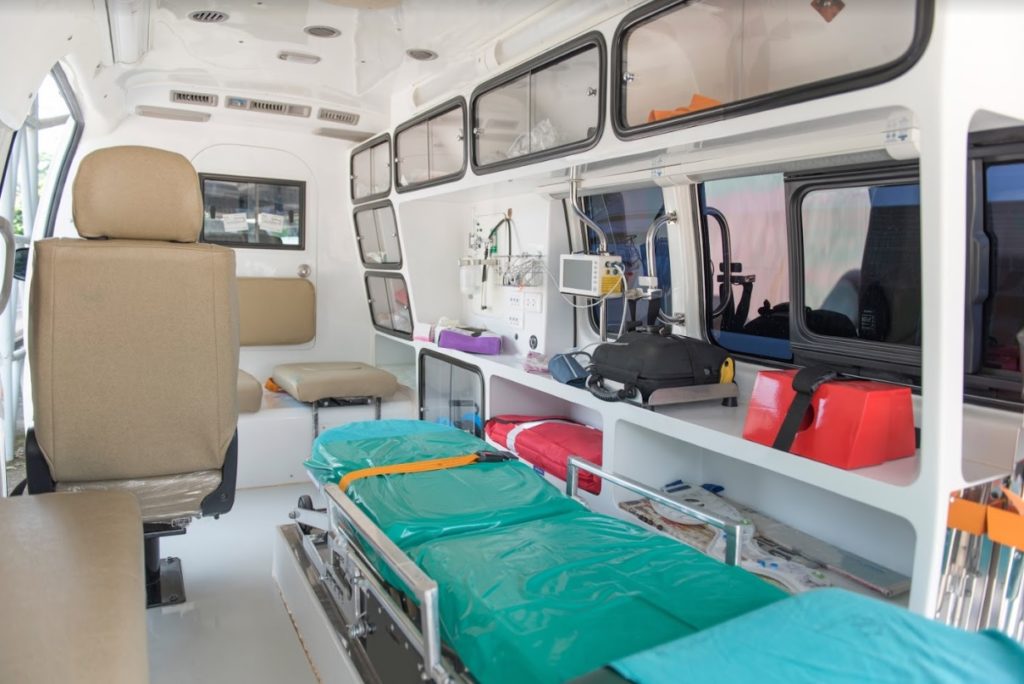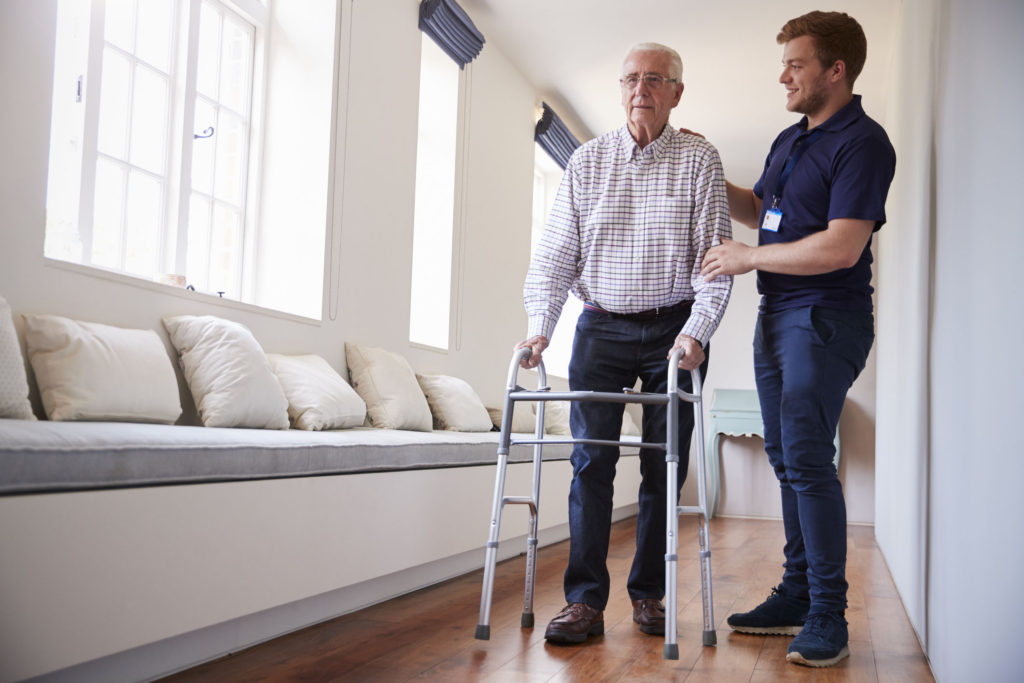With the onset of the pandemic, it has become increasingly important to encourage people, especially seniors, to stay indoors. At the same time, we must enable senior as well as vulnerable citizens in a way that they can easily lead their lives. There is a significant population of senior citizens who stay on their own with minimal assistance. In such a scenario, medical alert systems come to the rescue. A medical alert system, also known as a personal emergency response system (PERS), combines state-of-the-art communication and computer technology. It helps provide emergency monitoring of your loved ones, especially vulnerable members. A medical alert system can help create some amount of safety by arranging fast medical support in times of emergency.
The system generally comes with an easy-to-press button, which signals the alarm monitoring system when triggered. Based on the severity of the situation, the system intimates healthcare professionals, first responders, and family members. The most important aspect of the medical alert system is to ensure help as soon as possible. Most accidents can be non-fatal if assistance reaches on time. At times, immediate medical help is all that stands between a full recovery and a long-term disability.
An in-home medical alert system has two components, a console and a pendant with a button. The home is monitored electronically by a base unit plugged into a standard wall outlet and telephone jack. The user can wear the pendant around the neck or wrist or attach it to a belt loop. If an emergency occurs, a push on the personal help button alerts the U.S.-based call center. A live agent at the call center will then call emergency medical personnel or the emergency contact numbers. Call centers operate 24 hours a day, seven days a week, and callers are always connected directly to a live agent.
The technology behind medical alert systems has advanced drastically over the years. While the underlying concept remains the same, there are now three types of systems that cater to different situations:
Landline Systems
The first type of medical alert system was available through regular telephone lines. As landlines are easy to navigate, seniors prefer this system. It consists of a base station placed in a central location in the home that connects with wearable pendants or mounted call-button devices. In an emergency, seniors had to press the call button and alert the service provider for help.
Mobile Systems
Mobile systems are becoming increasingly popular due to flexible medical alert plans. These systems provide a variety of choices; they can be a single mobile device, a wearable call button, or both. They allow a senior to press a button and reach the monitoring center of their service provider from almost anywhere within range of a cellular signal.

In-Vehicle Systems
The latest innovation in medical alert technology is in-vehicle systems. These systems consist of a portable device that you can plug into a 12-volt adapter of any vehicle to access power. They come with a backup battery if a 12-volt source is not available. In-vehicle medical alert devices also work on cellular networks. The innovative features include automatic crash-detection sensors and GPS geolocating to pinpoint the user’s location if an emergency or accident occurs. These devices also have a built-in speaker, microphone, and an instant-connect button that, when pressed, immediately establishes a cellular connection with the provider’s call center.
Medical Alert System Components
Medical alert systems are continually improving to offer increased efficacy. Today, these devices are regarded as the first line of defense for elderlies either living alone or battling life-threatening ailments. The components of medical alert systems are constantly evolving to provide enhanced features. Let us take a look at them.
Base Unit (Console)
The key component of an in-home medical alert system is the console or base unit. It contains a digital communicator to receive the signal when the help button is pressed. The console immediately initiates a call to the monitoring center, where trained staff is available 24/7. Advanced consoles comprise sensitive microphones and speakers to facilitate two-way voice communication. The console may either plug into an electrical outlet and a landline phone jack or may be battery operated and work on a cellular network signal. Plug-in units typically have a long-lasting backup battery in case of power outages.
Remote Transmitter with Call Button
The other important component is the transmitter with the easy-to-press help button. The transmitter in the landline system can send a wireless signal to the base unit up to 1,300 feet away. However, the transmitter in a mobile system often acts as the console. Once the user presses the button, it connects with the call center.
Transmitters are typically water-resistant, and the most common types include:
- Wall-mounted units for placement in hazardous areas, such as bathrooms
- Wristband devices for easy wear
- Portable devices attached to a belt
- Pendant- or necklace-style devices worn around the neck
Monitoring or Call Center
The call center is a critical component that allows subscribers to access help quickly in an emergency. Reputable medical alert companies like Family1st have multiple call centers to cater to calls 24 x 7, 365 days a year. These centers are generally CSA– and UL- certified. The fully trained operators can access the caller’s on-record medical information, accurately assess their needs and promptly provide necessary assistance.
While the above are the basic components of medical alert systems, some providers offer advanced features such as:
Fall Detection Sensors
Fall detection sensors can detect when the subscriber slips or falls using accelerometers, gyroscopes, and advanced algorithms and automatically contact the monitoring center.

GPS Location
Several providers offer wearable and mobile devices with optional GPS tracking capabilities. These devices use satellite signals to track a location.
Caregiver Tools
Remote monitoring through a mobile phone or online portal is accessible through caregiver tools. The device collects and relays data on fall detection, button presses, and sleep periods through sensors. The feature can also provide GPS tracking, send low-battery notifications, and alert a caregiver if the wearer moves beyond a preset area or takes their device off. Read more: [5 Caregiving Tips And Advice To Ease Your Struggles]
Environmental Monitoring
There are many environment monitors available in the market. These devices sense unusual activities inside the home, such as carbon monoxide leaks and fires. As soon as a hazard is detected, the monitoring center is automatically alerted, and help is dispatched.
Based on user needs and ongoing technologically advanced features, you can find a wide range of medical alert devices in the market to suit you. So here are some tips to help find the right one:
- Assess the lifestyle of the senior in terms of activity. It helps in choosing the type of device – landline or mobile.
- Select the type of button that works best for your comfort and style: pendant, bracelet, or clip-on.
- Check out the efficacy of the monitoring center of the provider
- Add advanced features only if needed.
- Check whether a strong cellular signal is available in your area.
As we navigate through the pandemic with our loved ones, it is a dire necessity to provide an extra layer of safety to the older members of the family. Seniors – especially ones with chronic ailments – have difficulty taking care of their health without venturing out of the comfort and safety of their homes. In such scenarios, a medical alert system can help ease our lives.
